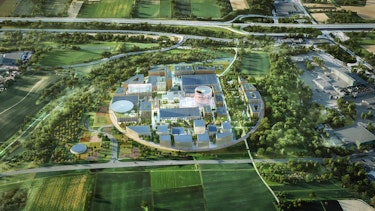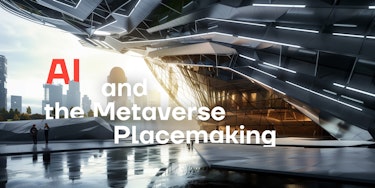In recent years, the confluence of artificial intelligence (AI) and the metaverse has begun to revolutionize various fields, with architecture and urban planning being no exceptions. The concept of placemaking, traditionally grounded in creating meaningful public spaces that promote people's health, happiness, and well-being, is undergoing a profound transformation. With the advent of AI and virtual realities, placemaking is now extending beyond physical boundaries into digital realms.
Data-Driven Design
AI facilitates a data-driven approach to design, allowing architects to make more informed decisions. By analysing data on traffic patterns, social interactions, environmental conditions, and user behaviours, AI can identify trends and preferences that significantly influence the design process. This ensures that public spaces are not only beautiful but also functional, accessible, and tailored to the needs of the community.
For instance, consider the redesign of a city park. Traditional methods might rely on observational studies and user surveys, which can be time-consuming and limited in scope. AI, however, can analyse real-time data from various sources, including social media, geolocation services, and environmental sensors, to provide a comprehensive understanding of how the park is used. This data can reveal peak usage times, popular routes, and underutilized areas, enabling architects to make data-driven decisions about where to place new amenities, pathways, or seating areas. Furthermore, AI can help predict future trends, allowing for designs that not only meet current needs but also anticipate future demands.

Credit: Designboom
Virtual Reality (VR) and Augmented Reality (AR) in Design Prototyping
VR and AR technologies are transforming the way architects and planners’ prototype and present their designs. With VR, stakeholders can experience a space before it is built, allowing for real-time feedback and adjustments. This immersive experience ensures that the final design aligns closely with the client's vision and user needs. AR, on the other hand, allows for the overlay of digital information onto the physical world, providing a new dimension of interaction and engagement.
Imagine a developer planning a new residential complex. Using VR, potential buyers can take a virtual tour of the apartments, exploring different layouts and finishes before construction even begins. This not only enhances the buying experience but also allows for early feedback, which can be invaluable in making design adjustments that increase customer satisfaction. Similarly, AR can be used during the construction phase to provide workers with detailed, real-time information about the building plans, reducing errors and improving efficiency.

Credit: Forbes
AI-Enhanced Public Engagement
Public participation is a critical component of successful placemaking. AI can enhance this process by analysing feedback from various sources, such as social media, surveys, and public forums, to gauge community sentiment and preferences. This information can then be used to inform design decisions, ensuring that the final product reflects the desires and needs of the community.
For example, in the planning of a new community centre, AI can analyse social media posts and comments to understand what features are most desired by the residents. It can also identify potential concerns or objections, allowing planners to address these issues proactively. By integrating AI into the public engagement process, architects can create designs that are more aligned with the community’s needs and values, fostering a greater sense of ownership and satisfaction among residents.

Credit: CNN
The Metaverse as a New Placemaking Frontier
The metaverse offers a new frontier for placemaking, where physical constraints are removed, and the possibilities are endless. In this digital realm, architects can create virtual spaces that are not bound by the laws of physics, allowing for unprecedented creativity and innovation. These spaces can serve various purposes, from social gatherings and cultural events to educational environments and commercial hubs.
For instance, a virtual concert hall in the metaverse can provide an experience that rivals, or even surpasses, that of a physical venue. With no limitations on space or acoustics, architects can design an environment that enhances the performance in ways that are impossible in the real world. Similarly, educational institutions can create virtual campuses that provide interactive, immersive learning experiences for students around the globe, breaking down geographical barriers and fostering global collaboration.

Credit: Hyperspace
As we move further into the AI and metaverse era, the field of placemaking is poised for a dramatic transformation. The integration of AI and virtual realities into the design process offers new opportunities for creating spaces that are not only visually stunning but also highly functional and tailored to the needs of their users. By focusing on visual storytelling, architects and designers can convey complex ideas and emotions through compelling visual narratives, enhancing the user experience and fostering a deeper connection with the space.
Whether in the physical world or the digital realm, this innovative approach to placemaking ensures that every project is not only a work of art but also a functional, sustainable, and inclusive environment. In this new era of AI and the metaverse, the potential for placemaking is boundless. By embracing these technologies, architects and planners can create spaces that are more responsive, interactive, and personalized than ever before. This positions forward-thinking studios at the forefront of this exciting evolution, making them the go-to choice for clients looking to create meaningful and engaging spaces.
